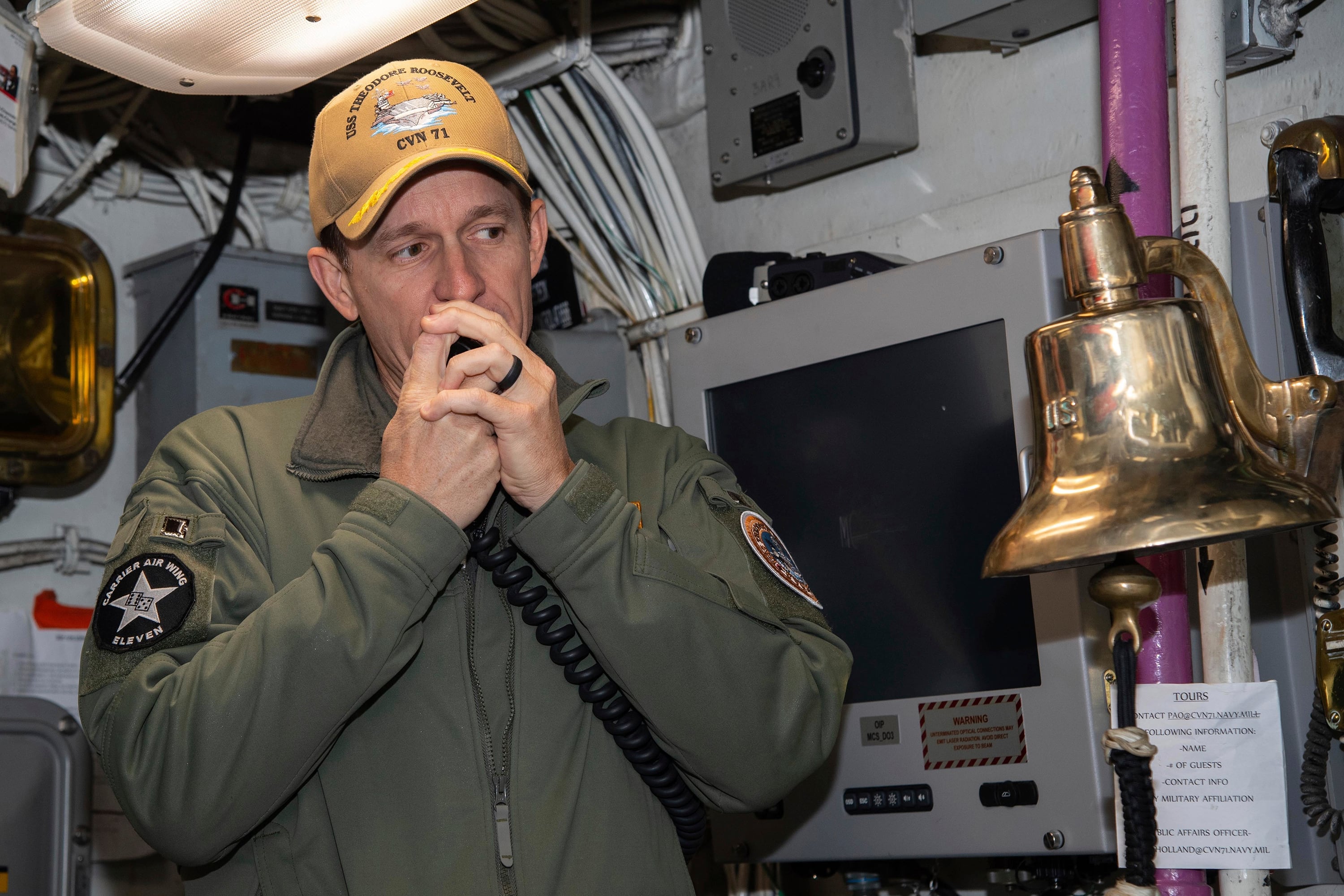The Navy isn’t done investigating the COVID-19 outbreak on the aircraft carrier Roosevelt and the removal of the ship’s former commanding offier Capt. Brett Crozier.
According to Acting Secretary of the Navy James McPherson, the Navy will conduct another investigation into Crozier’s ouster and the spread of COVID-19 aboard the carrier — a move that comes after Navy leadership reportedly backed reinstating Crozier to his command following the results of an initial review.
“After carefully reviewing the preliminary inquiry into the events surrounding the COVID-19 outbreak aboard USS Theodore Roosevelt (CVN 71), the Chief of Naval Operations, Adm. Mike Gilday, provided me with his recommendations,” McPherson said in a statement Wednesday morning. “Following our discussion, I have unanswered questions that the preliminary inquiry has identified and that can only be answered by a deeper review.
“Therefore, I am directing Adm. Gilday to conduct a follow-on command investigation,” McPherson said. “This investigation will build on the good work of the initial inquiry to provide a more fulsome understanding of the sequence of events, actions, and decisions of the chain of command surrounding the COVID-19 outbreak aboard USS Theodore Roosevelt.”
Politico was the first to report the update. On Saturday, Politico also reported that Chairman of the Joint Chiefs of Staff Gen. Mark Milley recommended Secretary of Defense Mark Esper hold off on reinstating Crozier, and conduct a supplementary investigation.
Meanwhile, McPherson and Gilday had already advised Esper on Friday to reinstate Crozier, the New York Times reported. But McPherson decided to pursue another investigation after receiving Milley’s input, a defense official told Politico.
Days after the Roosevelt reported sailors were testing positive for COVID-19, Crozier pressed the Navy in March to stop the spread of the virus among the crew by offloading most of them on shore in Guam where the ship had pulled into port.
He said those on shore should receive individualized isolation, and the fraction of the crew that remained on the Roosevelt could operate the reactor plant and sanitize the ship, among other things.
Crozier’s letter ultimately appeared in the San Francisco Chronicle, and he was relieved of duty on April 2 after then-Acting Secretary of the Navy Thomas Modly claimed the letter made its way up Crozier’s immediate chain of command over a non-secure email, and was copied to 20 to 30 additional recipients.
However, the Washington Post subsequently reported that the email was sent to a much smaller pool of recipients than Modly suggested.
Modly himself stepped down from his post after he visited Guam and told sailors aboard the Roosevelt the former skipper had either intentionally leaked the letter or was “too naïve or too stupid to be a commanding officer of a ship like this.”
Nearly 90 percent of the Roosevelt crew has been removed from the ship to help curb the spread of COVID-19, Navy Times previously reported.
The Navy said Tuesday there are a total of 940 active COVID-19 cases among Roosevelt sailors. Additionally, the service said 29 crew members have tested negative for COVID-19 twice and have been declared fully recovered.
One Roosevelt sailor — Chief Aviation Ordnanceman Charles Robert Thacker, Jr., 41 — died from complications stemming from coronavirus after he was admitted to the ICU at U.S. Naval Hospital Guam earlier this month.





